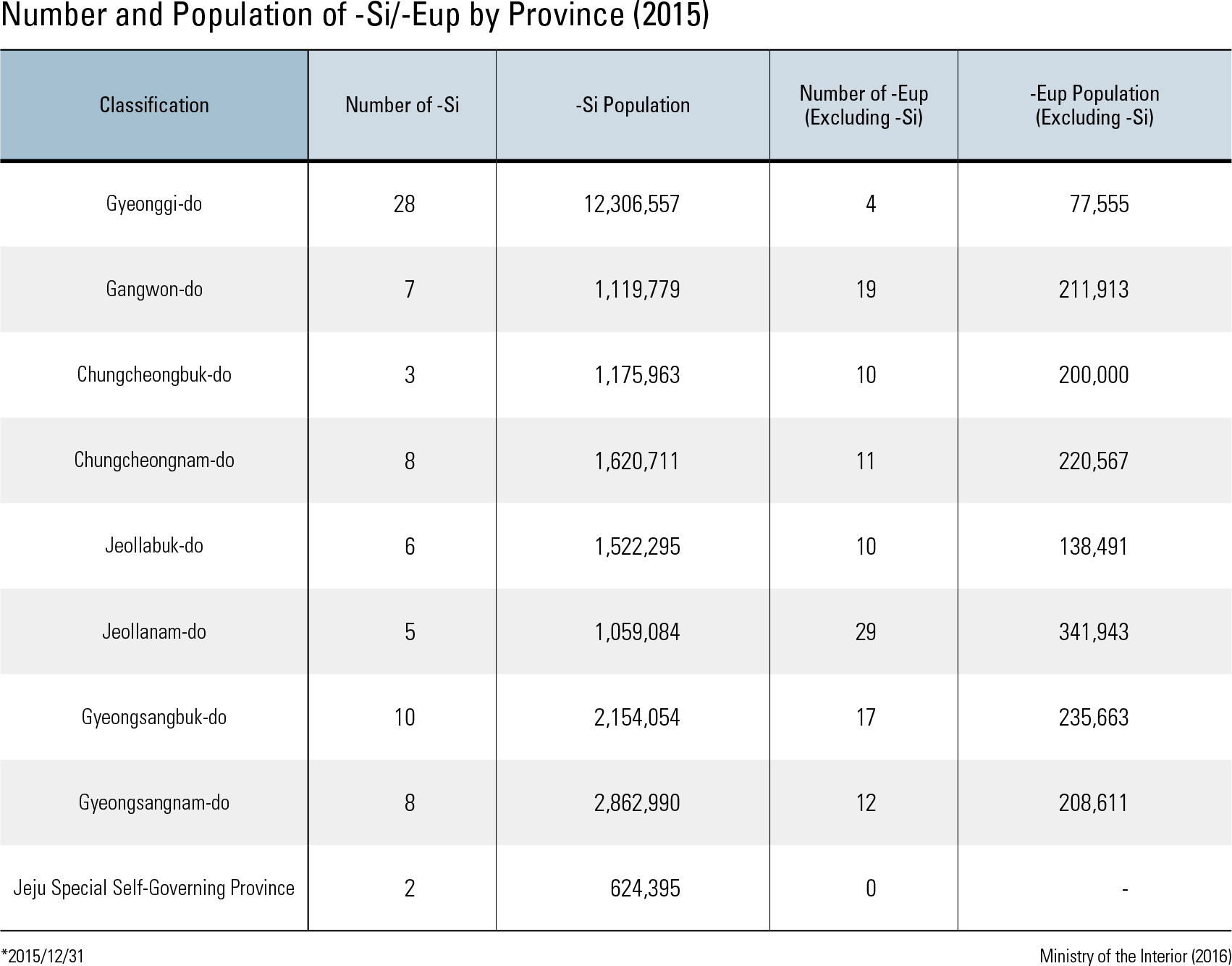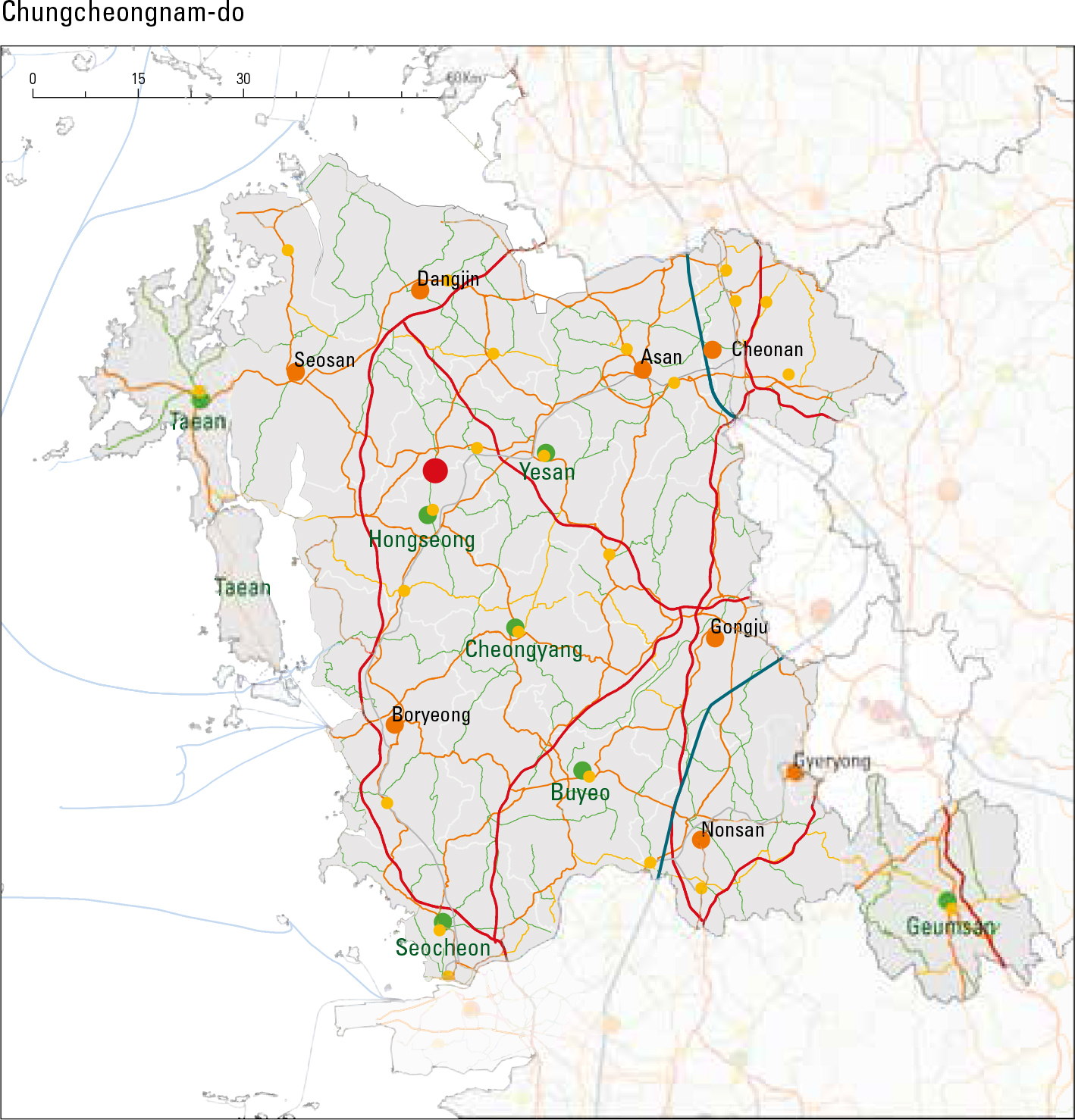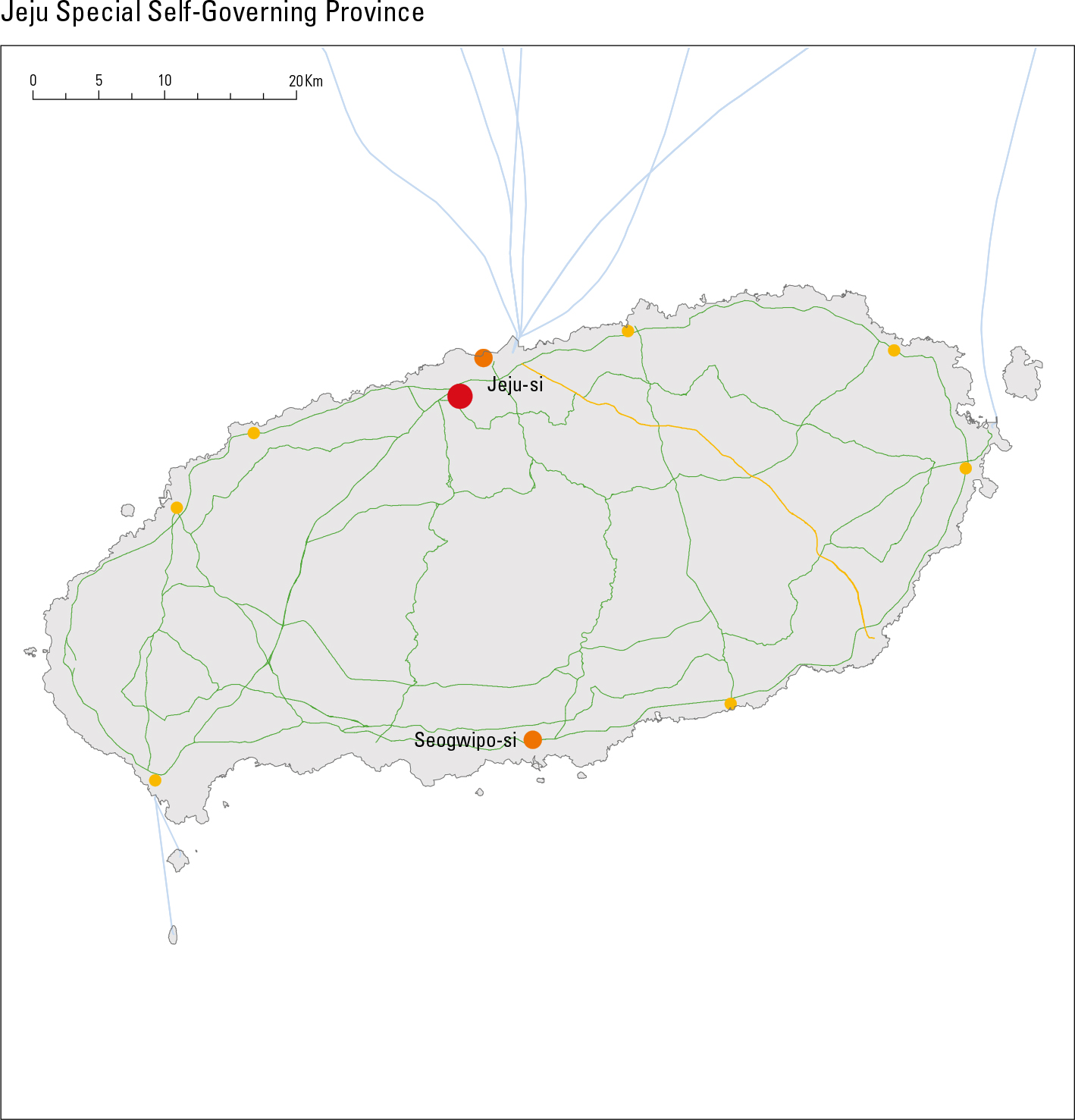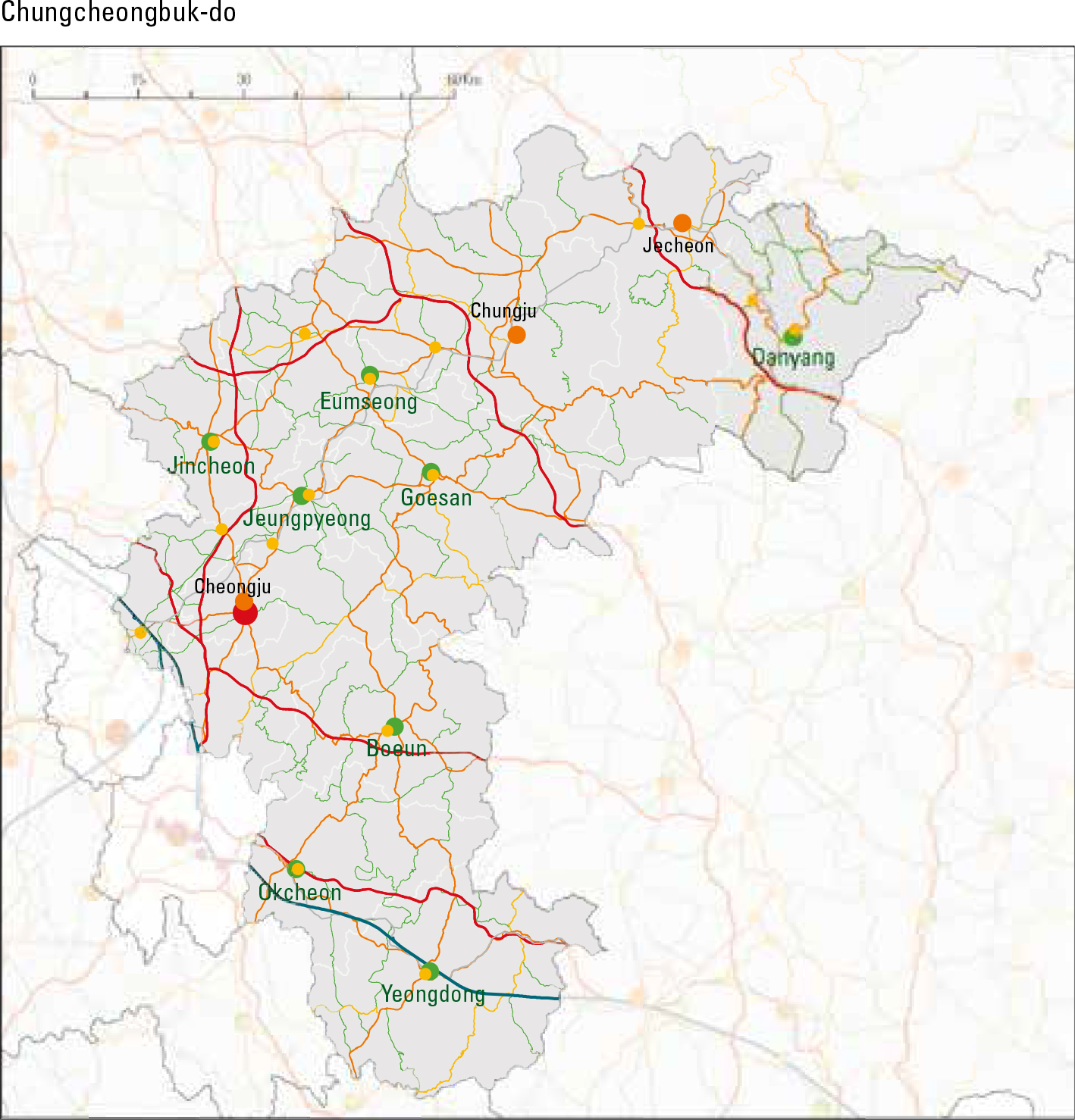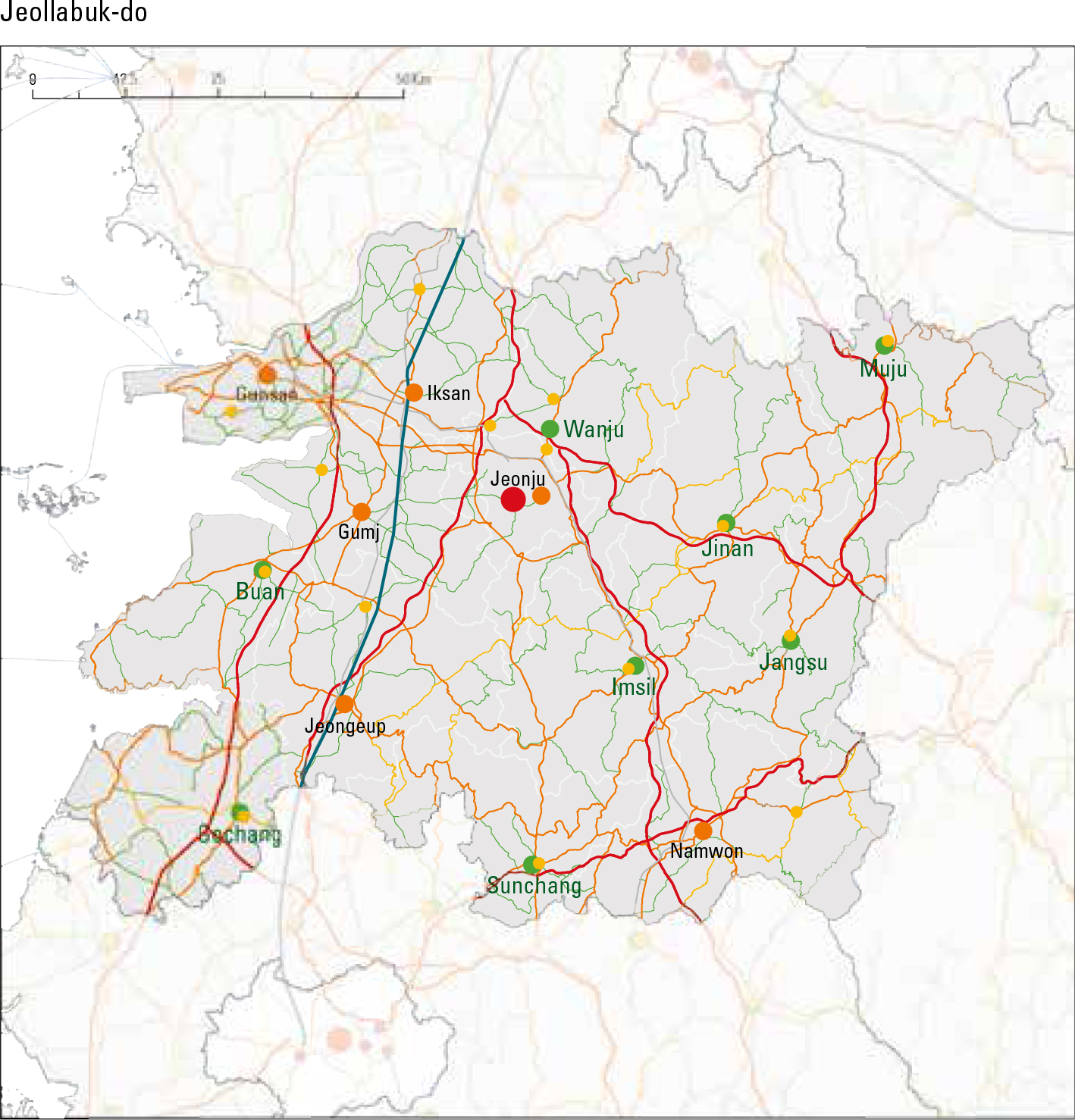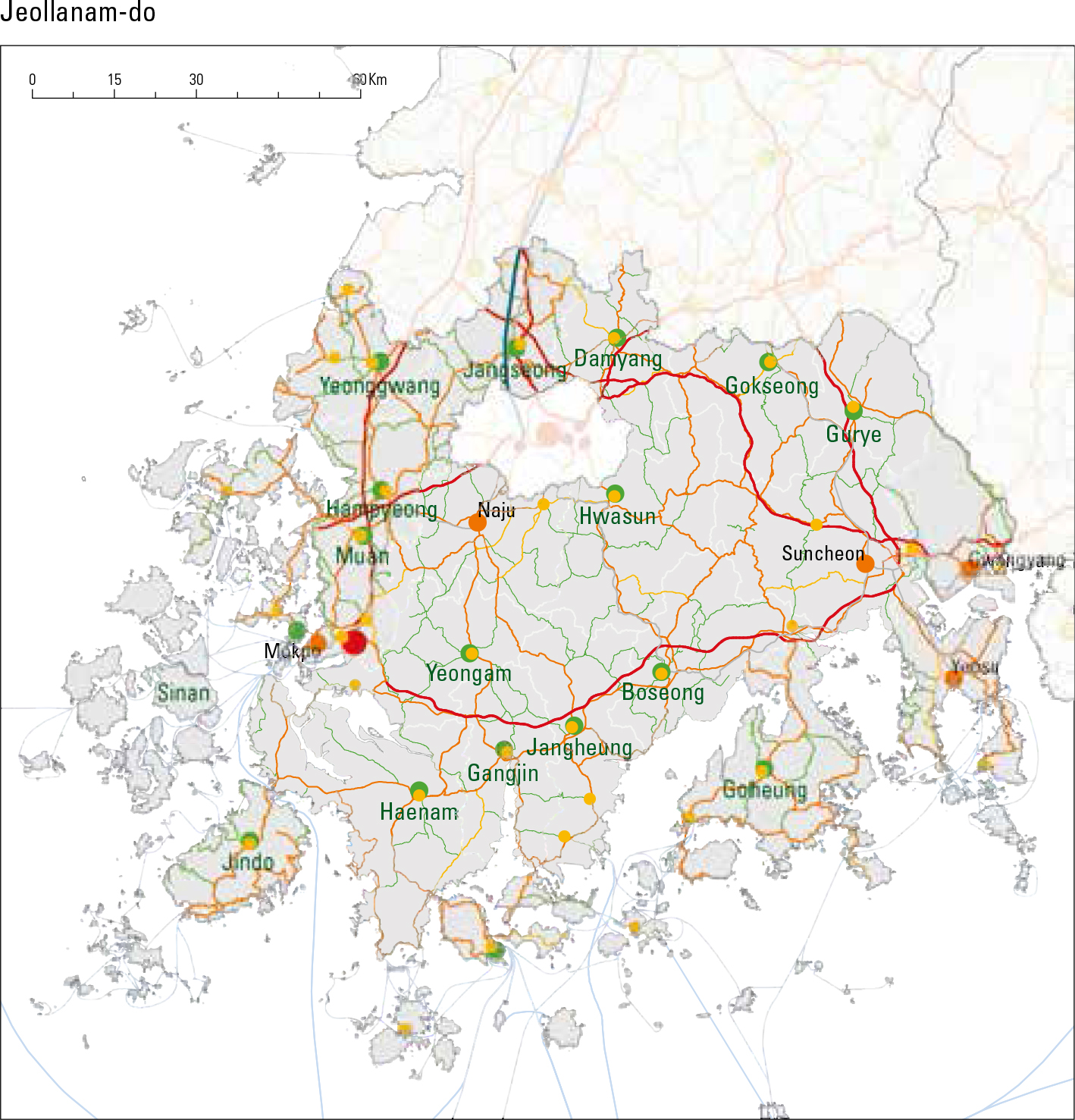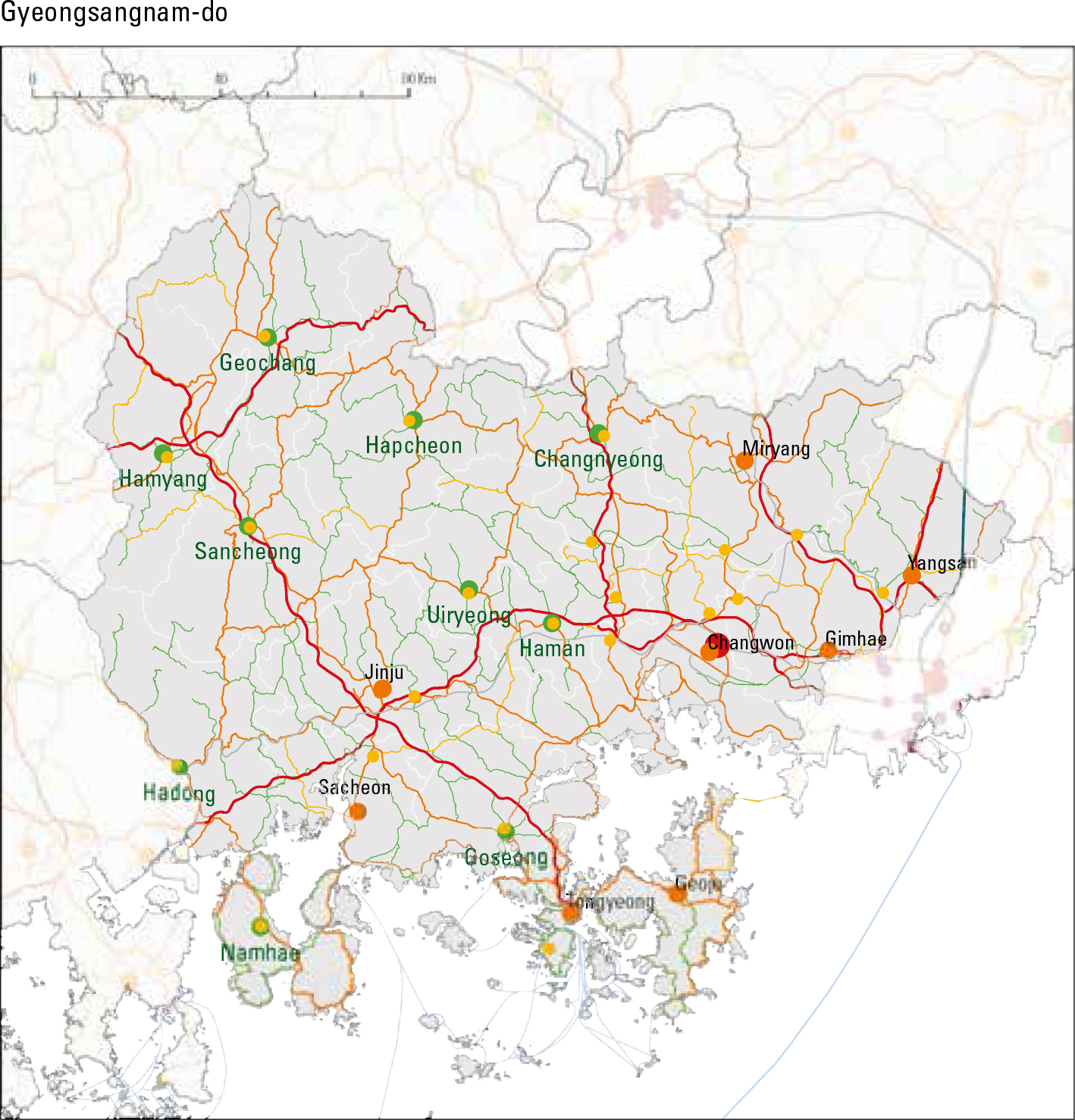English III
The distribution of cities ("-si"), counties ("- gun"), and the provincial capital ("-do") show a province’s characteristics. As the administrative center, the location of a provincial capital is de- cided by considering not only physical accessibil- ity, but also regional balance and representative- ness. For example, Gyeonggi-do has a large and sparsely populated northern region and a smaller but densely populated southern region. The Outer Ring Expressway runs through Gyeonggi-do. The provincial capital is located in Suwon-si. It was once moved from Suwon-si to Seoul during the Japanese colonial period, and was relocated back to Suwon-si in 1967. In Chungcheongnam-do, there is no particular outstanding central region, and its road system is concentrated in the east, connecting to Daejeon. Reliance on Daejeon has reduced since the open- ing of the Seohaean Expressway. Traditionally, the provincial capital was Gongju-si, but it was relocated to Daejeon to be near the Gyeongbu (Rail) Line during the Japanese colonial period. In 1989, Daejeon Metropolitan City was separated from Chungcheongnam-do, and thus, the capital had to be relocated once again. It is now located in Naepo New Town in Hongseong-gun. In Jeju Self-Governing Province, Hallasan is located in the geographic center, so administration branches are positioned along the coast. The provincial government buildings are located on the north side, close to the airport and the port. Chungc- heongbuk-do is the only province that does not border the sea, and it is composed of three self-governing cities (Cheongju-si, Chungju-si, and Jecheon-si) and multiple -guns. The provin- cial capital is Cheongju-si. In Gyeongsangbuk-do, metropolitan transporta- tion networks such as the Gyeongbu Expressway and the Daegu-Pohang Expressway pass through, connecting to Daegu. The provincial capital was located in Daegu for a while, but it recently re- located to Andong-si in the northern part of the province. After the separation of Daegu from Gyeongsangbuk-do due to its promotion to met- ropolitan city status in 1981, the relocation of the provincial capital was discussed. Andong-si was chosen as the new capital in 2008, and relocation of government functions was completed in March 2016. In Jeollanam-do, the Seohaean Expressway and the Honam Expressway are accessible. The provincial capital was relocated to Muan-gun in 2005, because Gwangju was separated from the province due to its promotion to Gwangju Metro- politan City in 1986. Because Muan-gun is locat- ed in the western part, additional administrative buildings were built in Suncheon-si, which is in the eastern part of the province. Gyeongsangnam-do has a number of north- south expressways starting from Busan, includ- ing the Gyeongbu Expressway, the Jungang Expressway, and the Daegu-Busan Expressway. In addition, the Namhae Expressway runs east- west. The Jungbu Naeryuk Expressway (Chang- won-si – Yangpyeong-gun in Gyeonggi-do) and the Tongyeong-Daejeon Expressway also pass through. The provincial capital was Jinju-si, but it was moved to Busan during the Japanese colonial period. In 1981 it was relocated to Changwon-si, despite challenges from Jinju-si and Masan-si to become the provincial capital since Korean inde- pendence in 1945.
page_2 |
